“Consumers have never been so hard to please and marketers have never had as many opportunities to please them”, Senior Vice President for Google Ads, Sridhar Ramaswamy
Forrester defines customer experience as, “How customers perceive their interactions with your company”. In a world where consumers have numerous opportunities to choose from, where digital content and products that they’re exposed to, have never been SO immaculately personalised, it’s vital for marketers to keep up with the latest digital and customer experience research.
The Digital Trends 2018 report by Adobe highlights optimizing customer experience as the single most exciting opportunity for the year, ahead of data-driven marketing and creating compelling content for digital experiences.
Here are some key statistics and benchmarks that will enable marketers and CX specialists to enhance their customer journey and experience, leading to both better customer acquisition and retention.
- 79% of consumers want to see that brands care, before consider making a purchase (Wantedness)
- 84% of organisations working to improve CX have experienced an increase in revenue (Dimension Data)
- 44% of companies seem to have greater focus on customer acquisition (Invespcro)
- There is a retention rate of 92% among companies with a well-crafted customer service approach. (Aberdeen)
- 70% of companies that deliver exceptional customer experience use customer feedback (ThinkJar)
- When interacting with a business for customer service and support, 78% of consumers use mobile devices. That number increases to 90% when working with millennials. (Genysys)

- The Genesys State of Customer Experience research reveals that one in three consumers is willing to pay more to receive a higher level of service.
The report by Genysys also highlight a common problem in customer experience – no specific team deals solely with customer experience. When we look at customer experience, there are various teams in a company responsible for providing effective customer experience. The report highlights the following teams that work together on customer experience:
- Marketing team, as they’re usually responsible for customer lead acquisition and overall brand perception.
- Sales and business development teams, involved with selling the product.
- The product or service delivery teams interact with customers when there are issues with the product.
- Back-office teams, accepting payments or handling collection-related activities.
- The IT department, which works to make the online usability experience as seamless as possible.
Even though there are various different teams that play different roles across a customer’s journey, and therefore, their experience; they often end up working in silos, which highlights a common CX problem faced by many companies. It’s often difficult to distinguish clear lines of roles and responsibility.
- 45% of businesses manage customer experience through their customer care organization, while 30% manage it through their marketing teams. (Genysys)

- 28% of millennials agree that receiving personalized retail offers, based on their purchasing history is appealing (Salesforce)
- 64% of millennials value “anticipation and customization of the experience” based on their historical transaction data over privacy concerns. (Genysys)
- 45% of baby boomers (age 55 and over) value privacy over personalization.(Genysys)

- 54% of UK consumers feel more loyal towards brands that show a deeper understanding of their preferences and priorities. (Wantedness)
It’s easy to gather from this data that millenials view providing their personal data as a way of improved business facilities and comfortable user experience, however baby boomers might hold their personal data more closely,. If businesses want to dive into great depths of personalisation, it’s beneficial to educate their customers about the advantages that personalization can offer to them, in exchange of their data-sharing.
With data-privacy policies such as GDPR coming to effect and scandals such as Cambridge Analytica’s data manipulation being exposed, businesses need to be more transparent than ever before, in terms of their data collection and use as well as come up with innovate ways to make their customers feel comfortable in sharing their personal data.
- 38% of consumers are comfortable with sharing their location to receive a more personalized experience. (Genysys)
- 34% of consumers are comfortable with sharing their credit card information for future convenience. (Genysys)
Alternative research shows that Marketers are constantly looking to AI, to help them provide more compelling real-time experiences.
- Personalization remains as marketer’s most popular choice with 36% of company respondents, and 40% of their agency counterparts, selecting ‘Delivering personalized experiences in real time’ as their top priority. (Adobe)

- 83% of consumers state that the ability to move from one channel to another, such as moving from web chat to a live conversation, is desirable, but only 50% of businesses support such cross-channel interactions. (Genysys)
Channel switching and omnichannel experience is the new norm, when it comes to seamless user experience. It is no longer enough to just have an online presence on multiple channels, the channels now also need to be efficiently integrated.
- Latest research from Target Marketing shows that over 74% of responders said it was important, fairly important or very important to have a cohesive omnichannel experience.
- 35% of millennial shoppers want the ability to search products in a brick-and-mortar store, using an image and then receive product recommendations on the spot. (Salesforce)
Furthermore, despite of the rise in instant messaging, voice still remains the most preferred customer channel in most cases. However, it’s important to note that the the dynamics and use of voice are changing, as the use of voice search and AI continues to grow.
- 88% of consumers indicated they most frequently use voice/IVR Video, followed by web chat and email. (Genysys)

To further break this down, based on generational differences:
- 70% of millennials show a stronger preference for mobile marketing, whereas older generations, still prefer a voice interaction. (Genysys)

- Around 50% of consumers will use mobile messaging apps for customer service and support. (Genysys)
- More than 80% of millennials use Facebook Messenger, as compared to other social platform. (Genysys)

Top consumer choice of messaging apps includes Facebook Messenger, Skype and WhatsApp, across all generations.

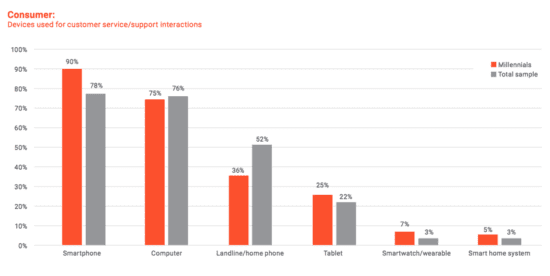
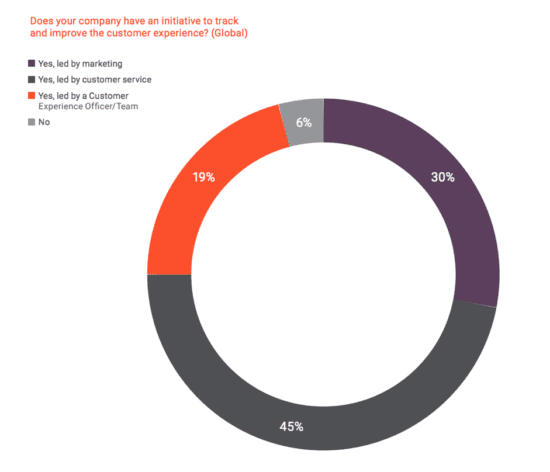
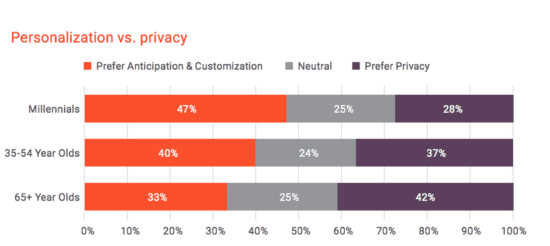
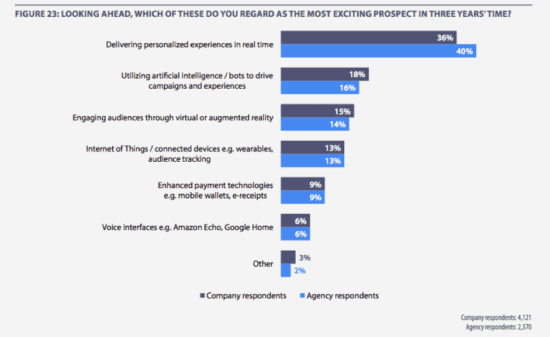
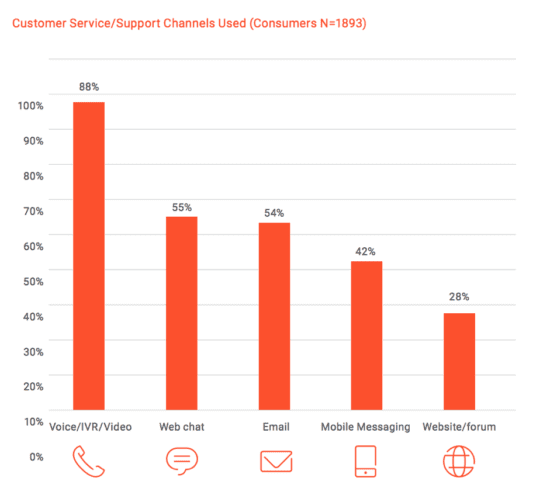
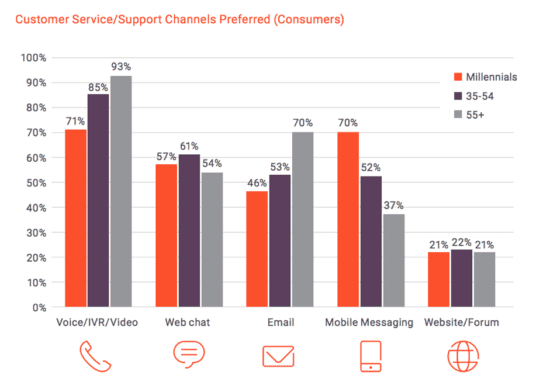
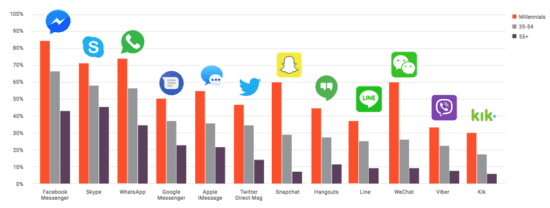

Comments are closed.